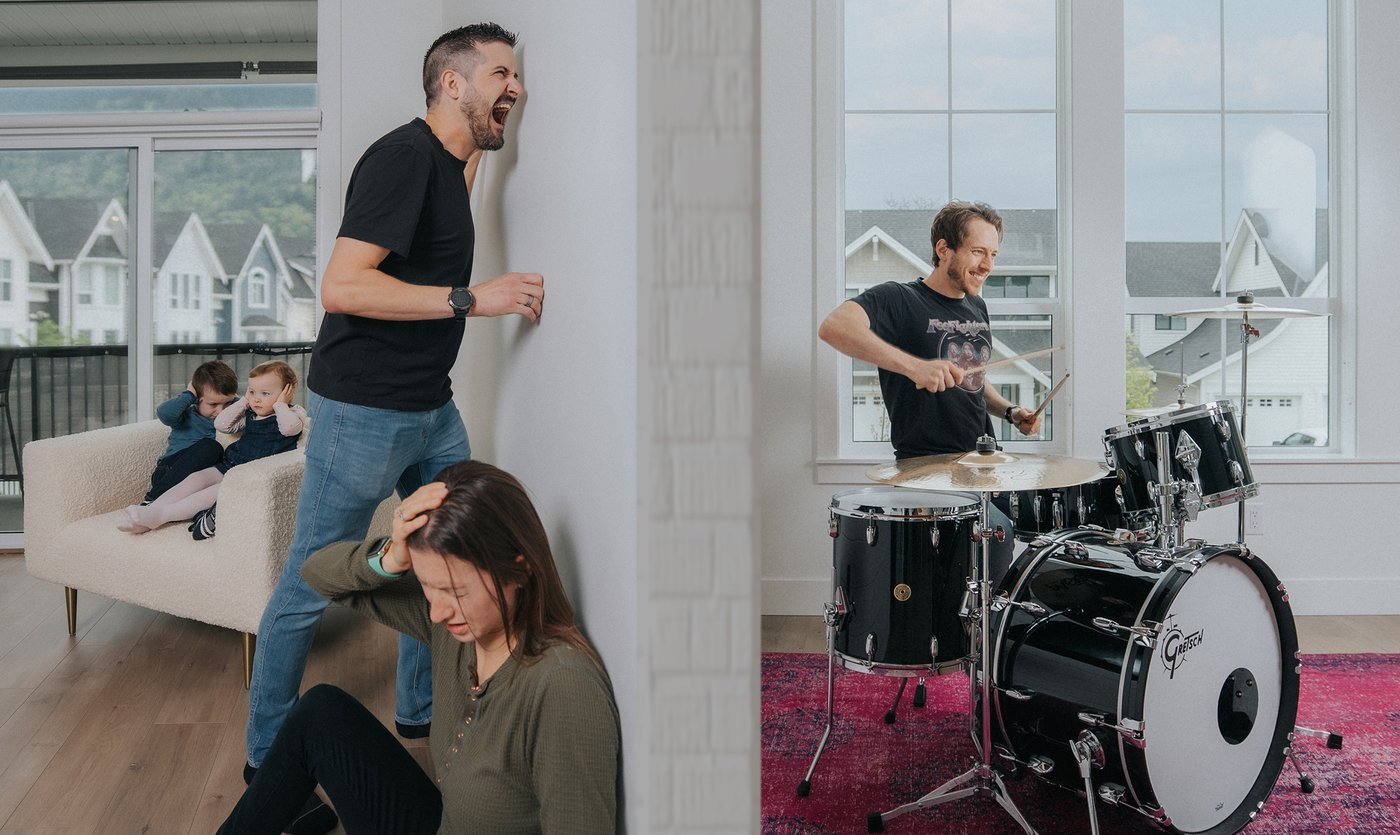
How can you practice drums without driving the neighbors (or your family) crazy?
Here are 7 ways to make drums quieter:
When I got back into drumming a couple of years ago, one of my first tasks was to assure my wife that her every waking moment would not be spent listening to the bombast of crashing cymbals and banging skins. Initially, we accomplished that by parking my drum set in the garage. This was moderately better for her but no fun for the neighbors. Eventually, however, we realized that we needed a solution that would satisfy my desire to play, her desire for a bit of quiet, and our neighbors’ desire to not have to kill me.
This problem is not exactly unique to drums, but drummers suffer from it more acutely than most. Because drums aren’t generally thought of as a melodic instrument, most non-drummers listening to us practice only hear banging, while even a mediocre guitar or piano player is clearly practicing a scale or a song.
So the question that confronts every drummer at some point or another is this: How can I practice quietly enough to avoid driving the people around me crazy? My father’s soundproof room solution is one possibility if you’ve got the space and the money to build it – but what about the rest of us?
Here are some options:
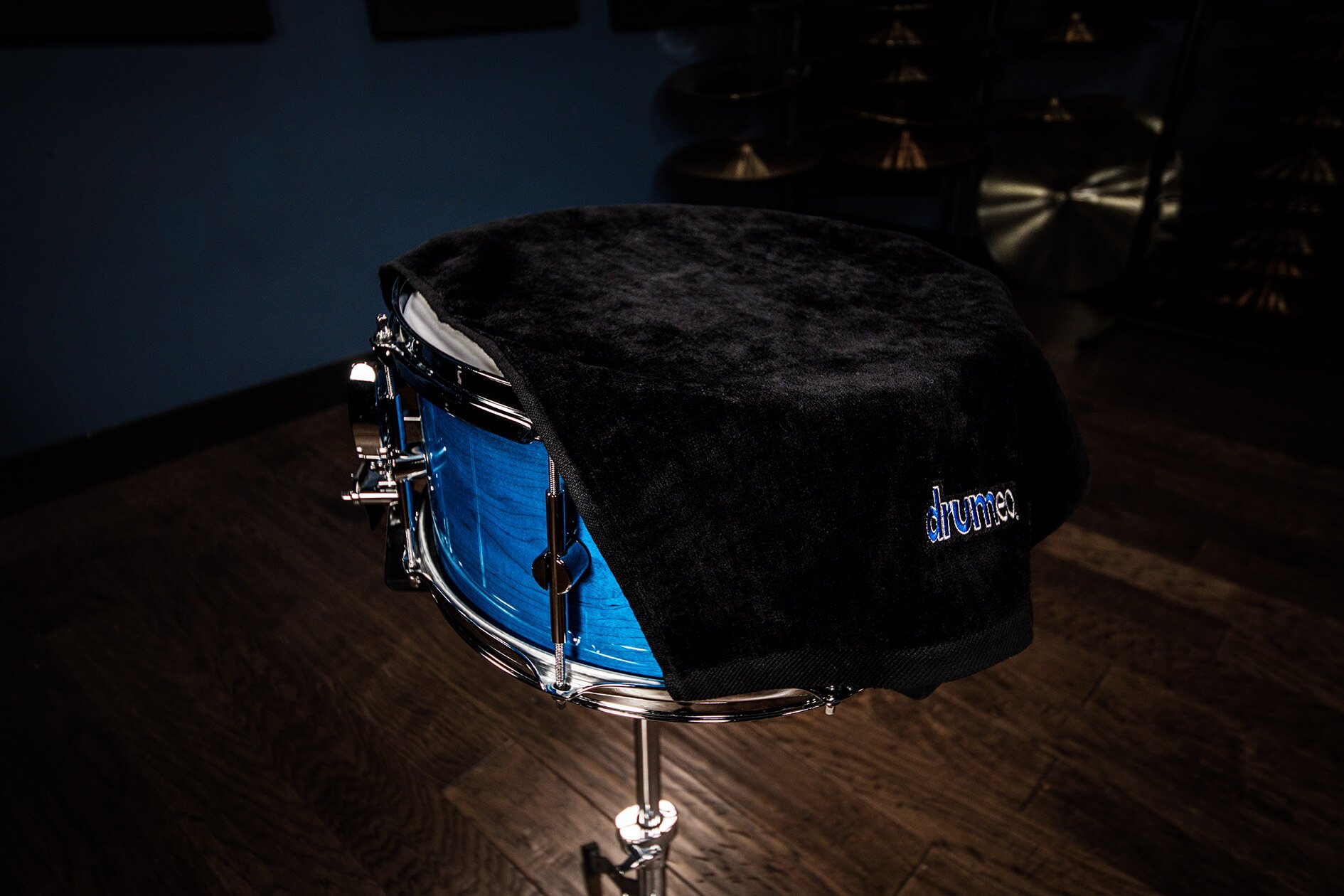
On the low end of the budget spectrum is the simple process of throwing some heavyweight towels or blankets over your acoustic drum kit. This has the advantage of saving considerable cash, but it does come at a cost.
The problem is that in order to get sufficient dampening, you may have to use towels and blankets so thick that it can make it difficult to play. If your covering affects your rebound, it may be difficult to work on your technique; and if you’re not careful, it can also increase your risk of injury.
On the other hand, if you choose lighter coverings, or arrange them on your kit so that you can still get a good degree of rebound, it might not be enough to adequately dampen your sound.
But if money is an issue, this is a viable option and, at the very least, shows your loved ones that you’re making an effort.
My preferred option to muffle the drums is to place mute pads on the kit. I use Evans SoundOff pads, which work great (or shop in Europe). They come specifically sized for your snare, toms, bass, and cymbals and substantially cut down on noise. I have been known to sit down to practice at 10 o’clock at night and no one in my house was any the wiser.
The bass drum mute is probably the most problematic part of the setup. It consists of a thick pad that sticks out a couple of inches from the drumhead and attaches to the rim via a set of metal rods. It doesn’t cut down on the noise nearly as effectively as the rest of the pads, and because the bass drum is on the floor, anyone downstairs from you will probably still be able to “feel” you playing the bass drum (even if they can’t quite hear it).
What’s more, because of its thickness, it can make it difficult to practice some bass drum techniques as you don’t get the extra two inches of play you would ordinarily have if you were simply hitting the unmuted head.
Another drawback to this approach is that, while you can practice on your own kit and everything is accurately sized, you still don’t quite get the rebound of a real drumhead – so it’s important to be aware of the difference. It doesn’t feel quite the same as hitting an actual drumhead; and as with thick blankets, if you’re not careful, injury is possible.
I compensate when working on rudiments. When I need to be able to hear every stroke, and when I need to work on rebound, I’ll switch to another practice pad that allows me to hear and feel the strokes more accurately. Still, as a compromise between budget and effectiveness, this is a good option.
You can also try stuffing your bass drum with blankets and using a soft beater.
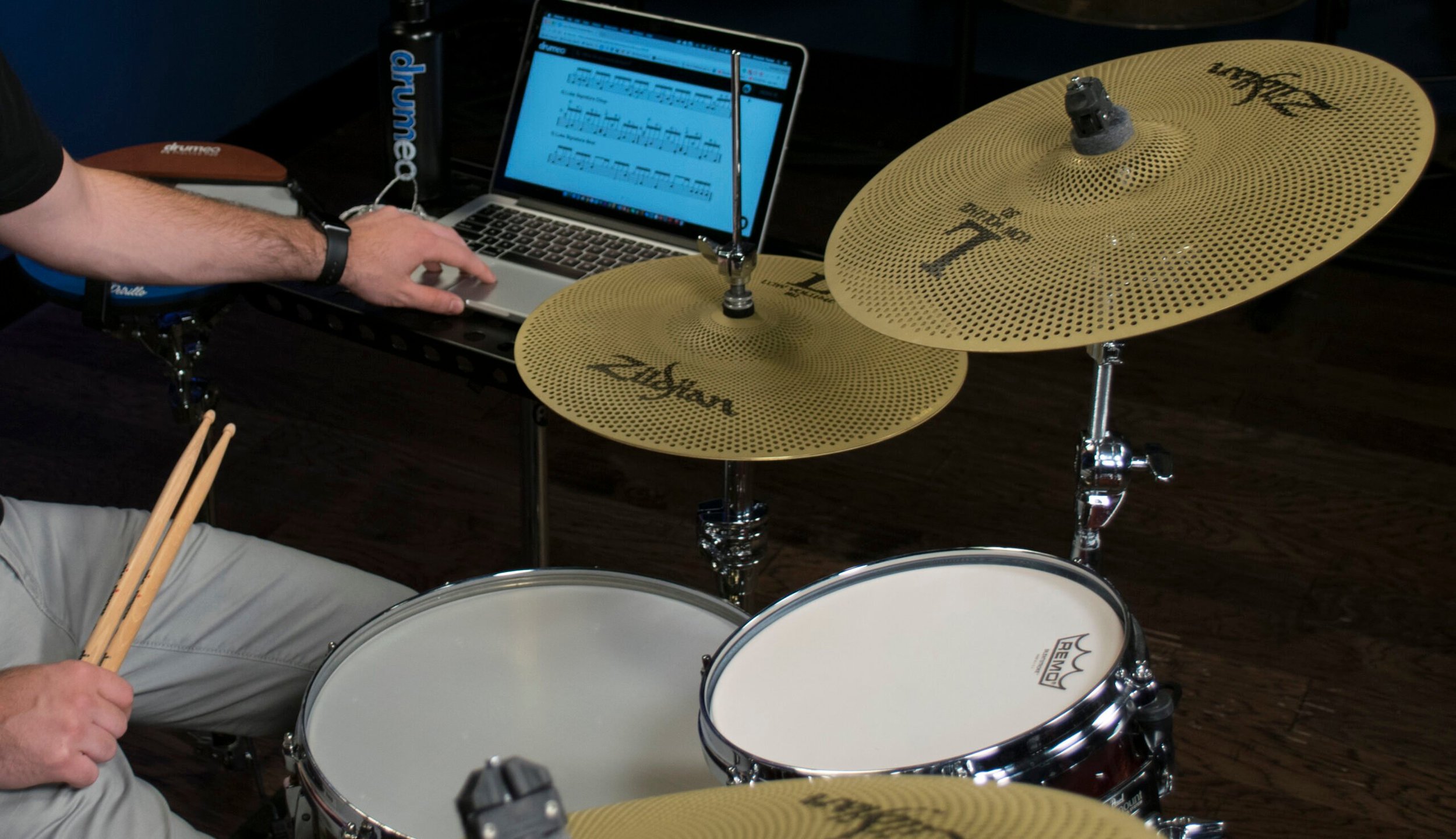
If you still want to feel like you’re hitting metal without the ear-piercing frequencies, try low-volume cymbals like these Zildjians (Editor’s note: Or the Sabian Quiet Tone line, which are also available in Europe). You won’t miss out on valuable practice time, and your neighbors will thank you.
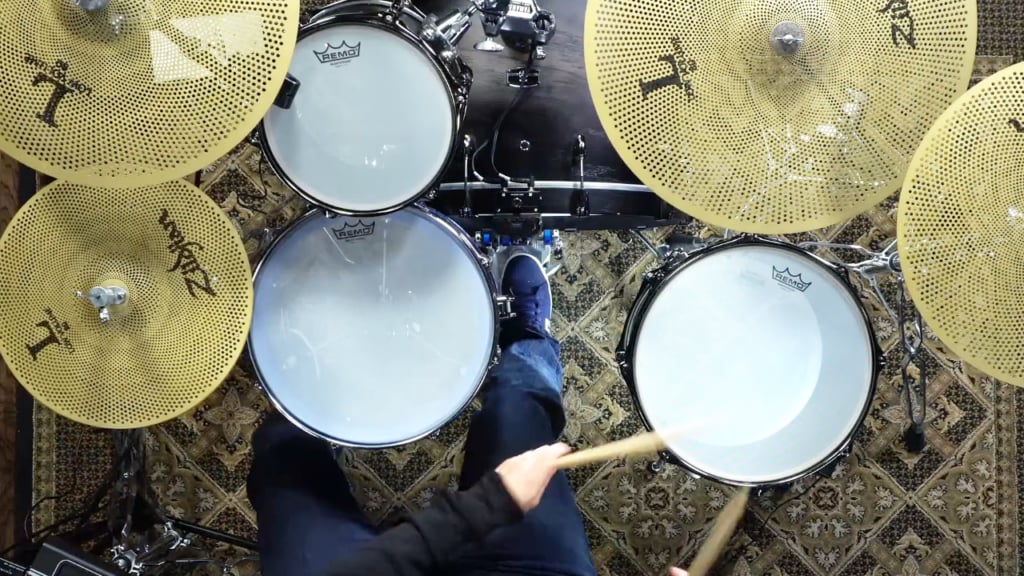
You can also buy a set of mesh drumheads and switch out the regular heads on your acoustic kit. It cuts down on noise exponentially and will make your drumming virtually inaudible.
The downside is using mesh heads will feel different, and it might throw you off the next time you play on regular heads. Like playing on an electronic kit without the audio samples, you won’t be able to hear yourself very well if you’re playing along to music, which means you might not notice if you’re making mistakes. You’d have to add triggers to solve that problem.
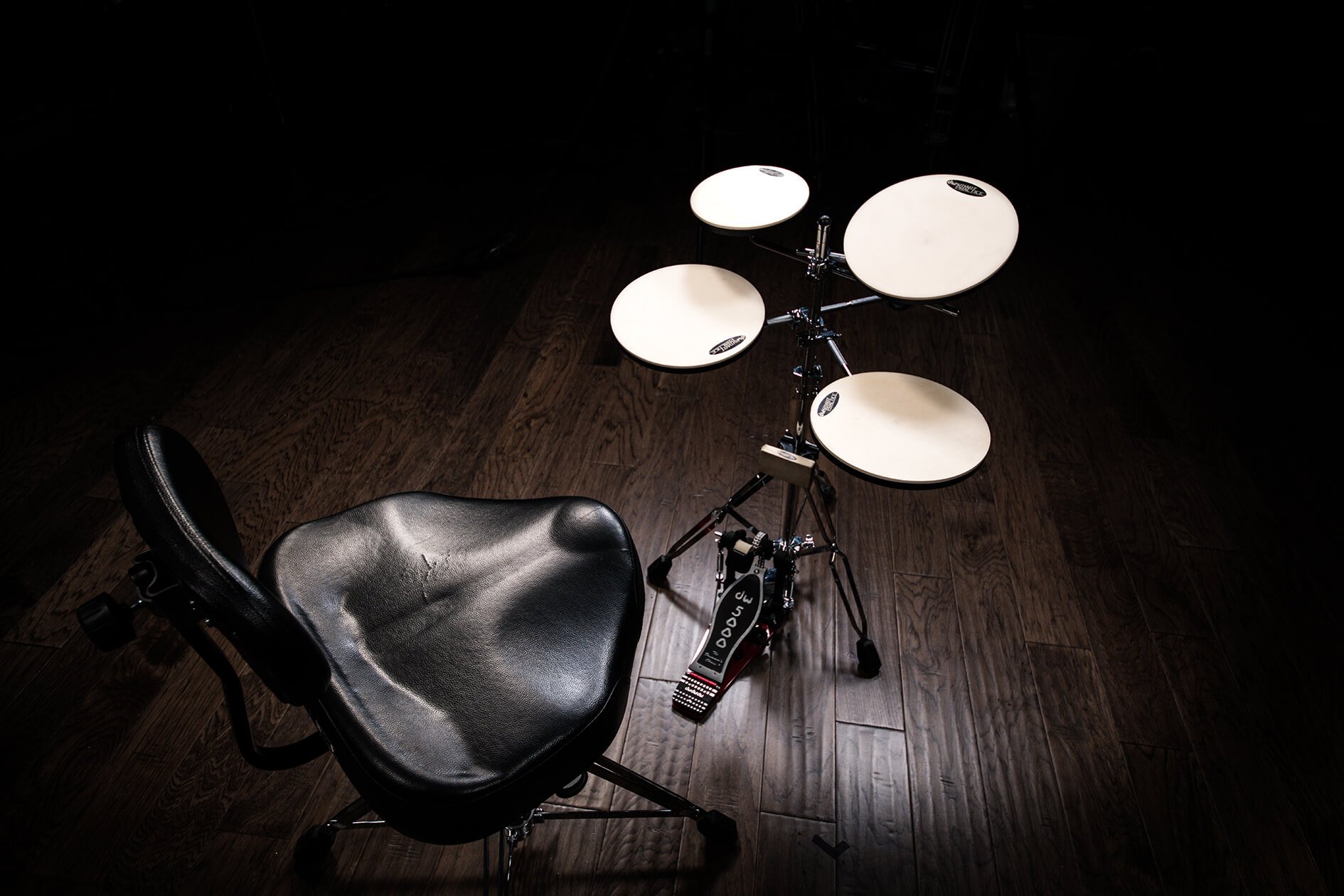
Climbing up the price ladder somewhat, Drum Workshop makes a “practice set” that consists of a set of drum pads attached to a central shaft and a pad for a bass drum pedal at the bottom. The whole thing attaches to a tripod and allows you to set up anywhere you need to practice quietly.
On the positive side, this kit isn’t too terribly expensive, is portable, and will allow you to play quietly. Additionally, the pads have a bit more rebound than you’ll get from the Evans pads. On the negative side, the whole thing is just a bit flimsy. If you’re a hard-hitting drummer, it might not withstand the constant pummeling to which you’re likely to subject it.
Additionally, it has the drawback of not allowing you to actually practice on your own kit. If you’re working on general rhythm and groove patterns, rudiments, or bass drum technique, this might not be that big of a deal. The individual pads are adjustable, so you can move them into the position you like.
If your practice routine consists of working around the kit, and the precise configuration of your kit matters to you, this might be a problem. Plus, while it’s on the less expensive side, it’s not that much less expensive than a lower-end electronic kit. Which brings us to…
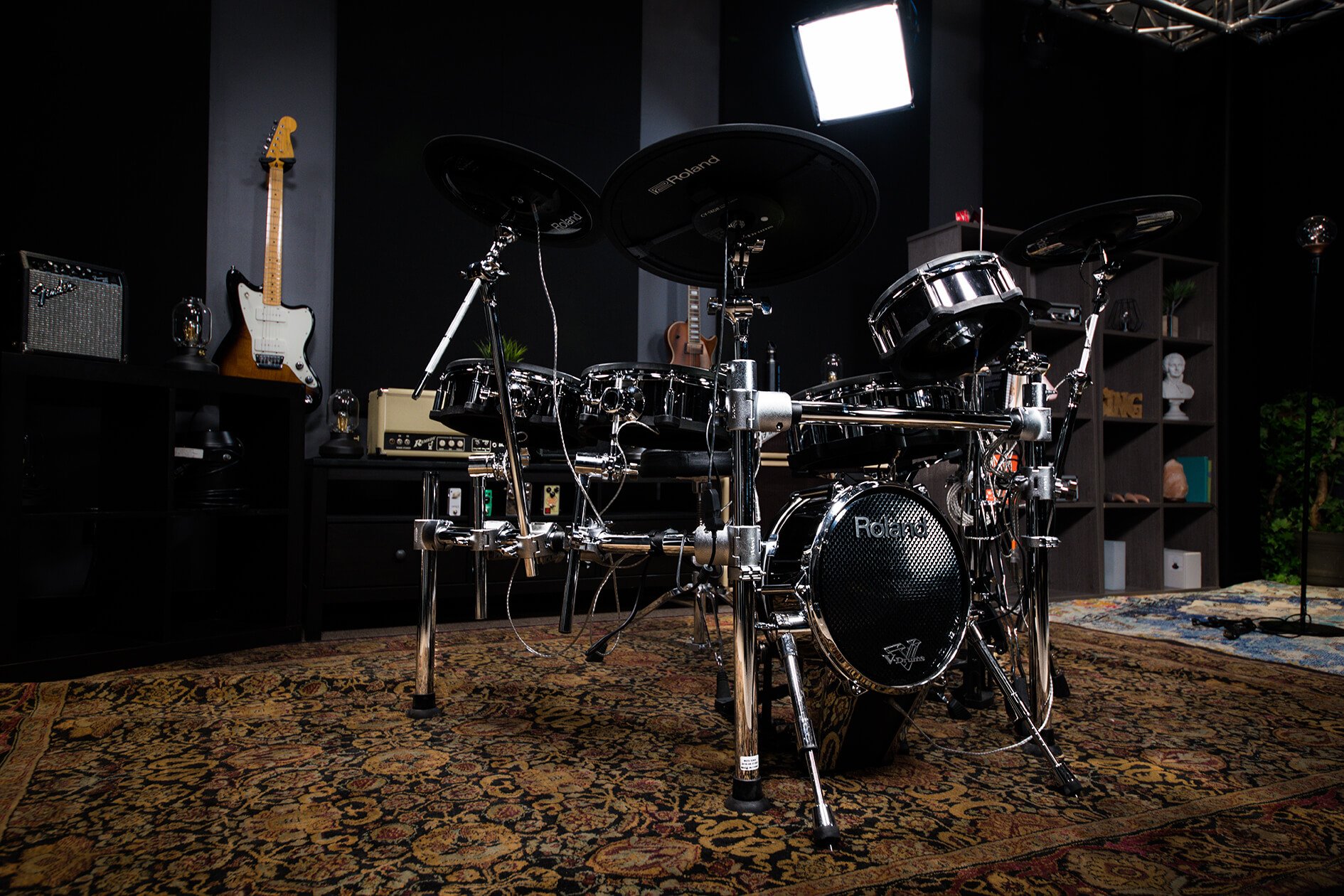
Back when I was grooving in my little soundproofed room, “electronic drums” were fake-sounding, fake feeling, and expensive. They weren’t remotely an option for an amateur drummer looking to go easy on their neighbors’ ears. Since then, however, electronic drums have improved on every front.
They sound excellent, often feel as good as an acoustic kit, and have become much more affordable in recent years. An entry-level electronic drum kit may cost as little as a couple hundred dollars while still sounding and feeling good. Additionally, electronic kits often offer a wide array of additional sounds beyond the standard snare-tom-kick-cymbal combos. Beyond that, it’s often possible to run backing tracks along with drum sounds through a set of headphones (available in Europe, too) for an optimally quiet practice experience. For many drummers, it represents an ideal solution.
However, there are still drawbacks. For one thing, the better sounding and feeling kits remain on the more expensive side. And for drummers who already have an acoustic kit (or shop in Europe), finding the space for an additional set of drums may present a problem.
Beyond this, there still remains an “acoustic/electric” divide among drummers, and for those who just can’t abide an electronic kit, this may simply not seem to be a particularly attractive option. But if you’ve got the space and money, an electronic kit may offer the best of all possible worlds. It provides a realistic sound and feel, while preserving the goodwill of your family and neighbors.
In this video, Drumeo tests out different types of drumstick alternatives, many of which bring down the volume of your playing.
In Conclusion
Given the available options, it’s entirely possible for a drummer today – even one on a budget – to offer his or her family and friends the gift of relative quiet (even while practicing the hardest of licks). It’s ultimately up to you to decide how you want to go about it, how much you want to spend, and which of the approaches suggested here best fit your own personal style. Not everyone is lucky enough to have a father willing to soundproof the basement on their behalf.
The good news is that today, no one has to go that route unless they really want to because the options are there. Whatever route you pursue, it only takes a small amount of effort to create a lot of goodwill in your house and on your block.
Scott Paeth is a drummer and educator in Chicago. He has been drumming since the age of 14 and is the drummer for the indie rock band The Bannermen. Connect with Scott at www.scottpaethdrums.com.


By signing up you’ll also receive our ongoing free lessons and special offers. Don’t worry, we value your privacy and you can unsubscribe at any time.
We use cookies for traffic data and advertising. Cookie Policy »